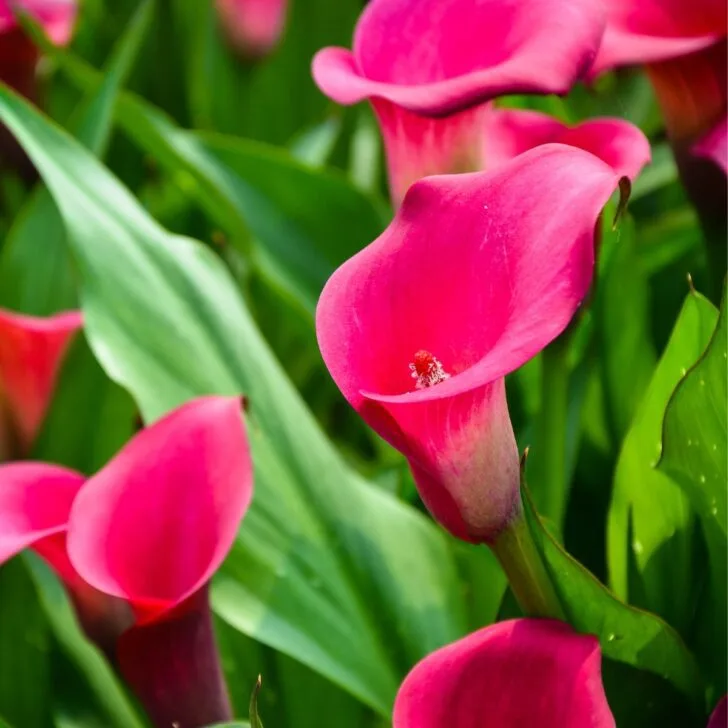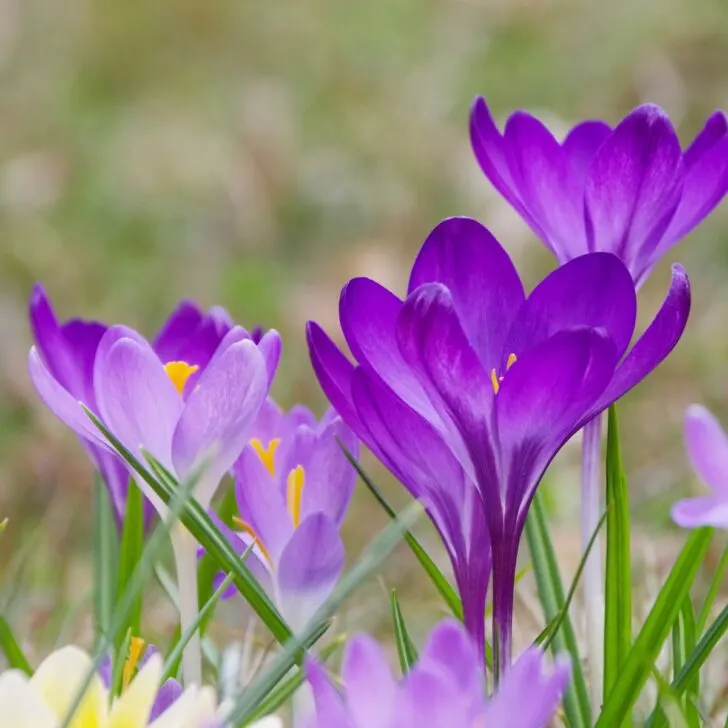Learn what to do with daffodils after they bloom, including when to deadhead and cut back foliage, so they come back year after year!
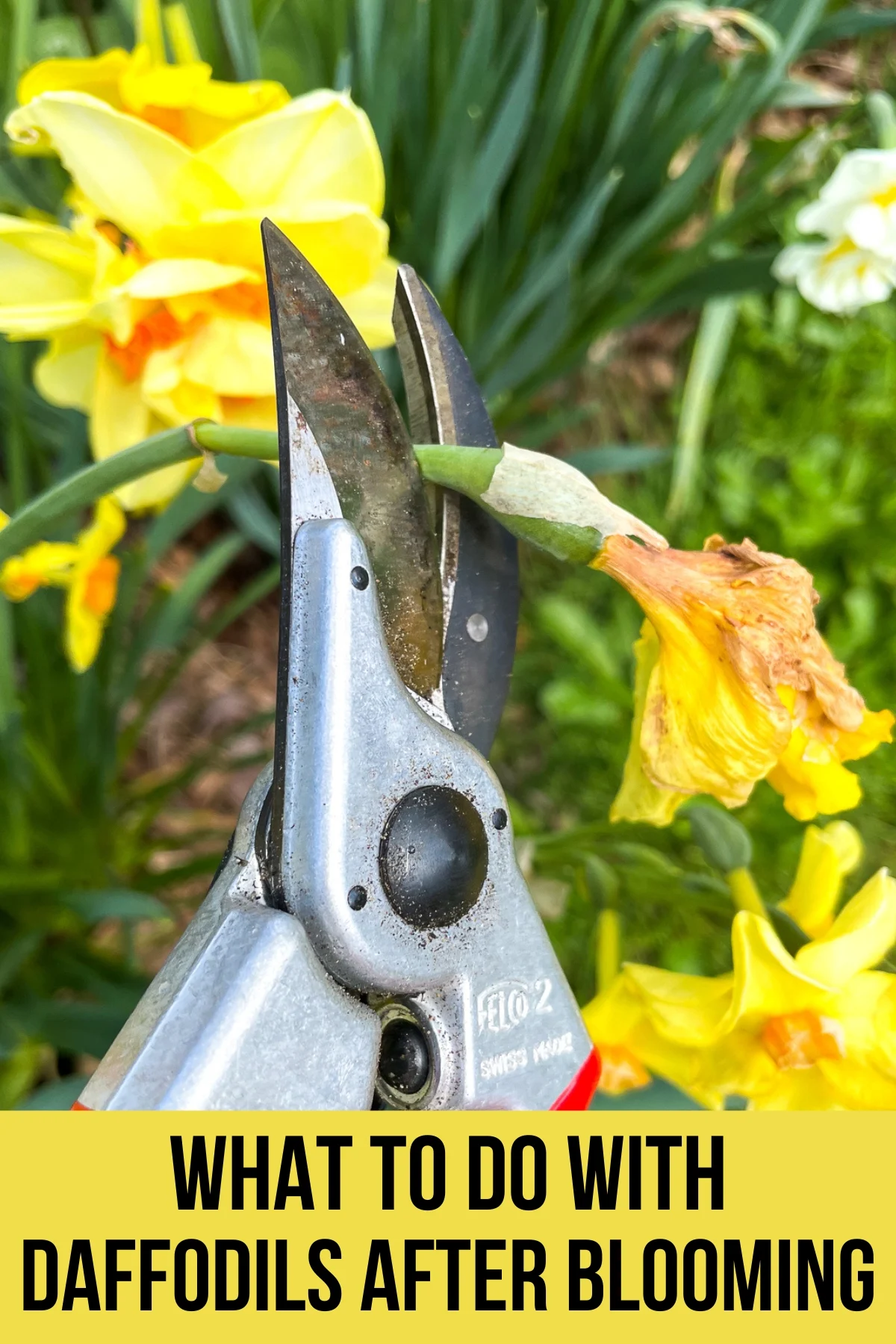
Ah, the delight of daffodils in full bloom! These cheerful flowers are a sure sign that spring has arrived. However, once the flowers have faded, it's essential to know what to do with your daffodils to ensure a healthy, vibrant display the following year.
When I planted daffodils last fall, I used a mix of bulbs that all bloom at different times. Some pop up really early, while others emerge at the same time as the tulips. This ensures a constant display of color, and allows me to deadhead a few spent blooms at a time rather than the entire cluster.
In this article, I'll show you what to do with daffodils after they bloom, from deadheading faded flowers to managing foliage and providing essential nutrients. Here's how to care for these lovely springtime flowers to guarantee an even more stunning display next season!
This post contains affiliate links for your convenience. Purchases made through these links may earn me a small commission at no additional cost to you.
Deadhead spent flowers
A crucial part of maintaining your daffodils after they've bloomed is deadheading, which means cutting off the flowers when they start to turn brown. By doing this, you prevent the plant from putting energy into creating seeds, allowing it to focus on strengthening the bulb for the following year.
Make sure you're using clean, sharp pruning shears or scissors to avoid causing damage or introducing disease to the plant. Locate the base of the spent flower head where it meets the stem. You'll want to snip off the top just below the bulge under the bloom where the seeds develop.
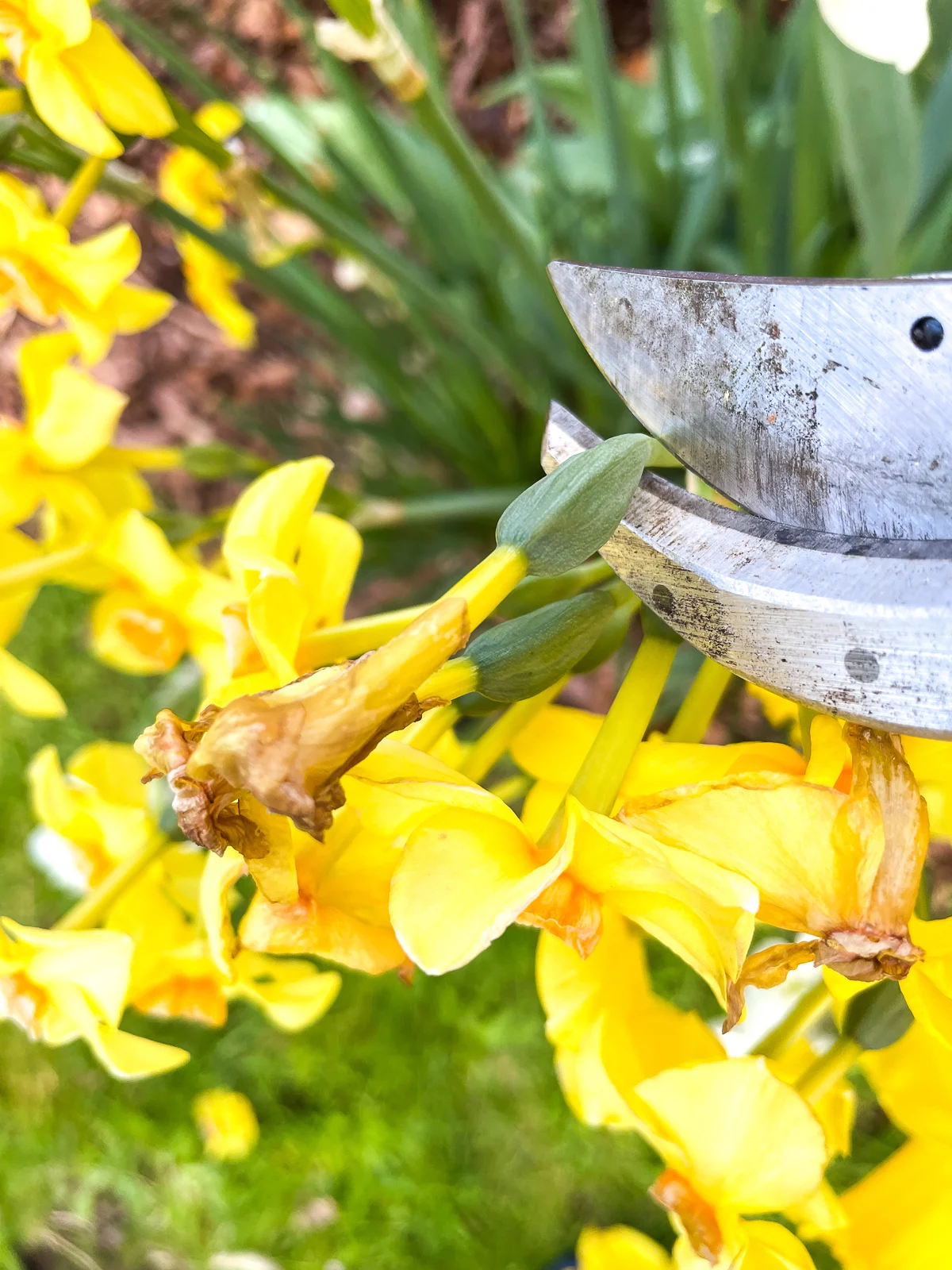
It's best to deadhead your daffodils as soon as the flower starts to fade or wither. By removing the spent flowers promptly, you can prevent the plant from developing seed pods, which can drain energy from the bulb.
Caring for daffodil foliage
Just as important as deadheading your daffodils is taking care of the leaves after the flowers have bloomed. It's essential to leave the foliage intact until it turns yellow and dies back naturally. The leaves gather sunlight and provide energy to the bulb, ensuring a healthy bloom next year.
The leaves typically turn yellow 6-8 weeks after the flowers have bloomed. During this time, it's important to avoid the temptation to cut back or tie up the foliage while it's still green. Tying up the leaves prevents them from photosynthesizing properly (plus, it just looks weird!)
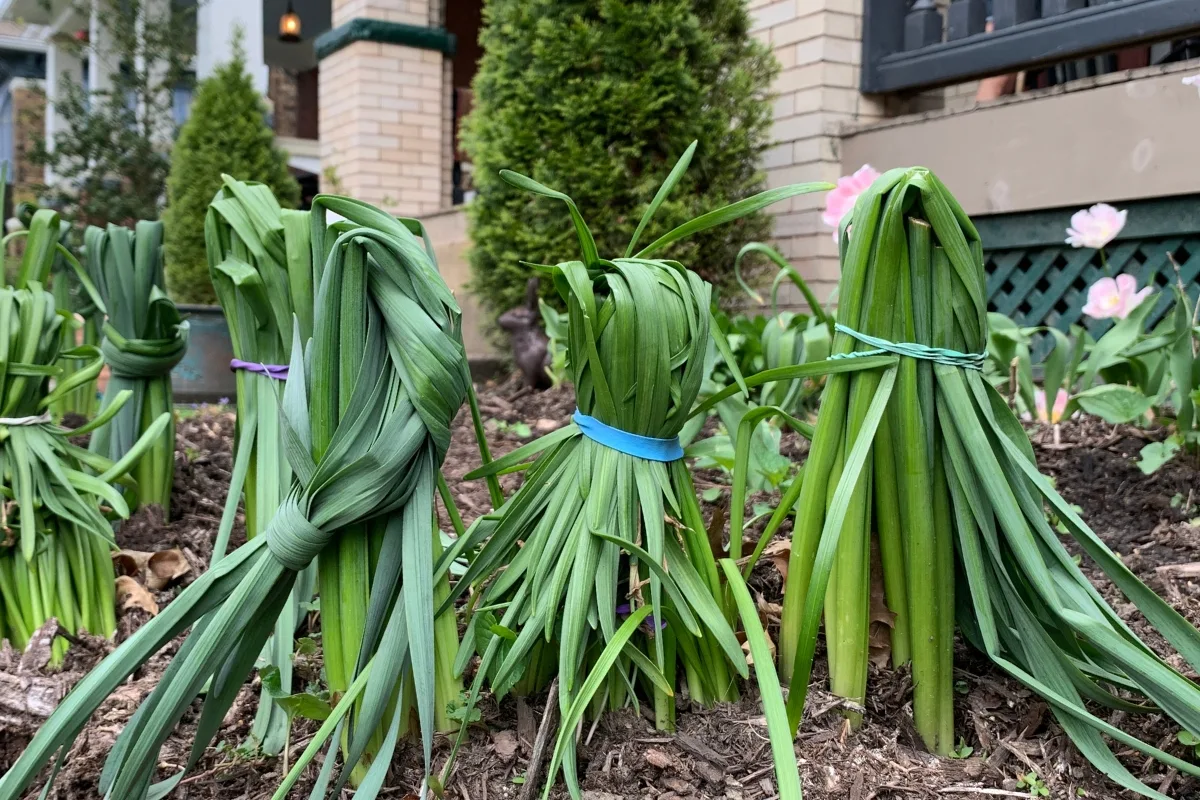
While it might be tempting to neaten up your garden by removing the green foliage, it's essential to be patient and wait for it to yellow and wither on its own. Once the leaves have turned yellow, you can safely trim them back without harming the bulbs.
Fertilizing daffodils after blooming
A critical aspect of post-bloom daffodil care is providing the necessary nutrients to support healthy bulb development. Applying a bulb fertilizer helps ensure that your daffodils have the energy and nourishment they need to produce strong bulbs for next year's blooms.
Opt for a slow-release, granular bulb fertilizer such as BulbTone that is high in phosphorus and potassium, as these nutrients are essential for supporting root development and flowering. Be sure to follow the package instructions for the correct application rate to avoid over-fertilizing.

To apply the fertilizer, gently sprinkle it around the base of the daffodil plants, taking care not to let it come into direct contact with the foliage. Water the area thoroughly after application, as this will help the fertilizer penetrate the soil and reach the bulb. Proper watering also ensures that the nutrients are evenly distributed and available to the plant.
The best time to fertilize daffodils is right after the flowers have faded but before the leaves have yellowed. This allows the plant to absorb the nutrients and store them in the bulb, setting the stage for a healthy, vibrant display the following spring.
Dividing and transplanting daffodil bulbs
Over time, daffodil bulbs can become overcrowded, leading to a decline in flower production and overall plant health. You can divide those clumps and plant them in another area of the garden!
You may also want to dig up daffodils that were once planted in a sunny spot, but have become shaded out by growing trees. This poor little daffodil has been struggling in this shady spot for years, so I'll be moving it over where it can get more sun. You can see the more shade-tolerant lily of the valley popping up around it!
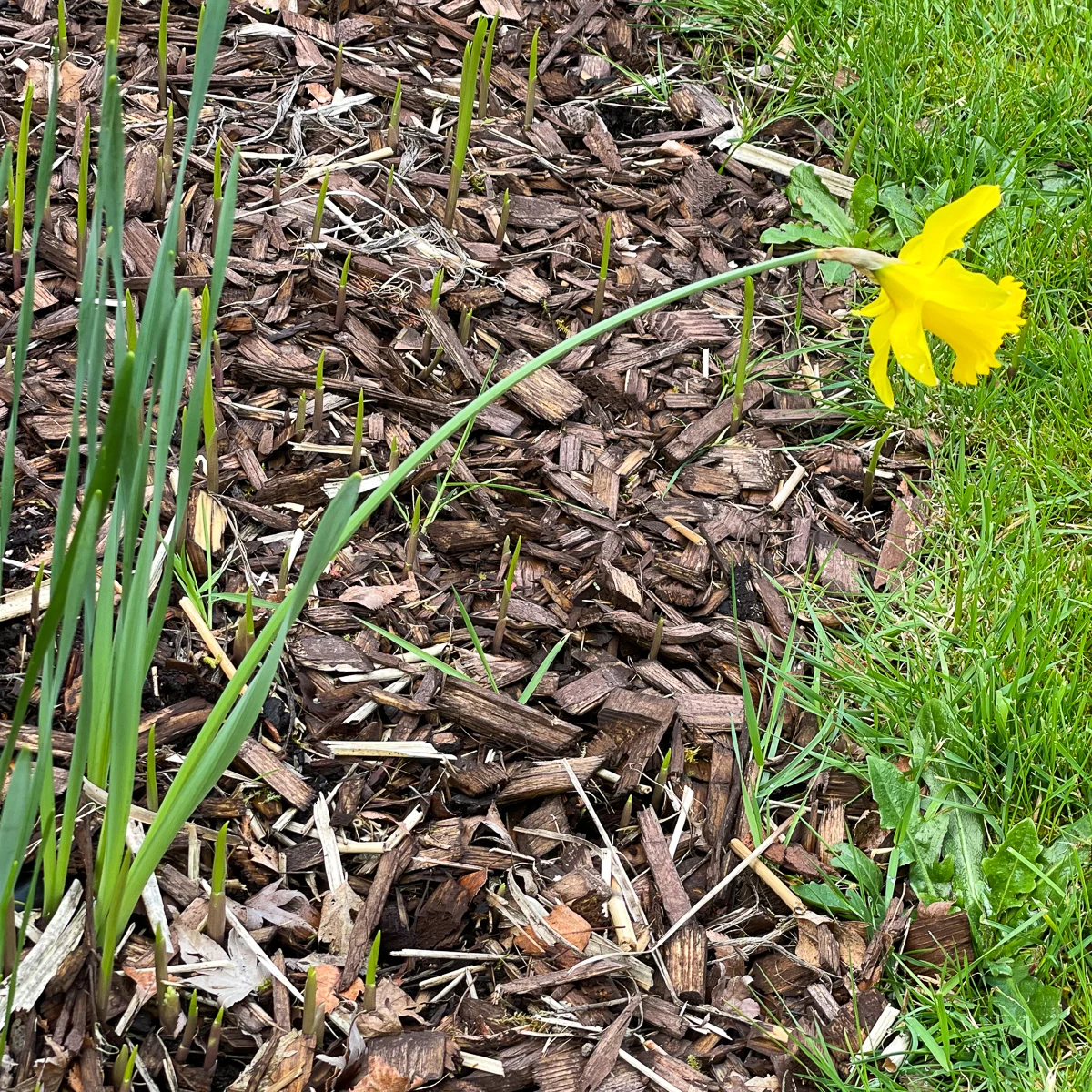
The best time to dig up daffodil bulbs is after the leaves have turned yellow, but before they have been cut back. This allows the bulbs to receive the necessary nutrients from the foliage while still being easy to locate.
To divide and transplant daffodil bulbs, carefully dig around the base of the plant using a trowel or a small spade, being cautious not to damage the bulbs. Once you've lifted the clump of bulbs, gently separate them by hand, taking care to keep the roots intact.
Replant the divided bulbs in their new location, making sure to space them about 4-6 inches apart, and at a depth that is about three times the height of the bulb. Water the newly transplanted bulbs well to help them settle into their new home.
Saving daffodil bulbs
In some cases, you might need to save your daffodil bulbs for later replanting in the fall, such as when you're moving or rearranging your garden. Proper storage is essential to ensure the bulbs remain healthy and viable until it's time to plant them again.
Follow the steps above for digging up the bulbs, then gently brush off any excess soil and let them dry in a well-ventilated area for a few days. This step helps prevent mold and rot from developing during storage. As you prepare the bulbs for storage, inspect them closely and discard any that appear damaged or diseased.
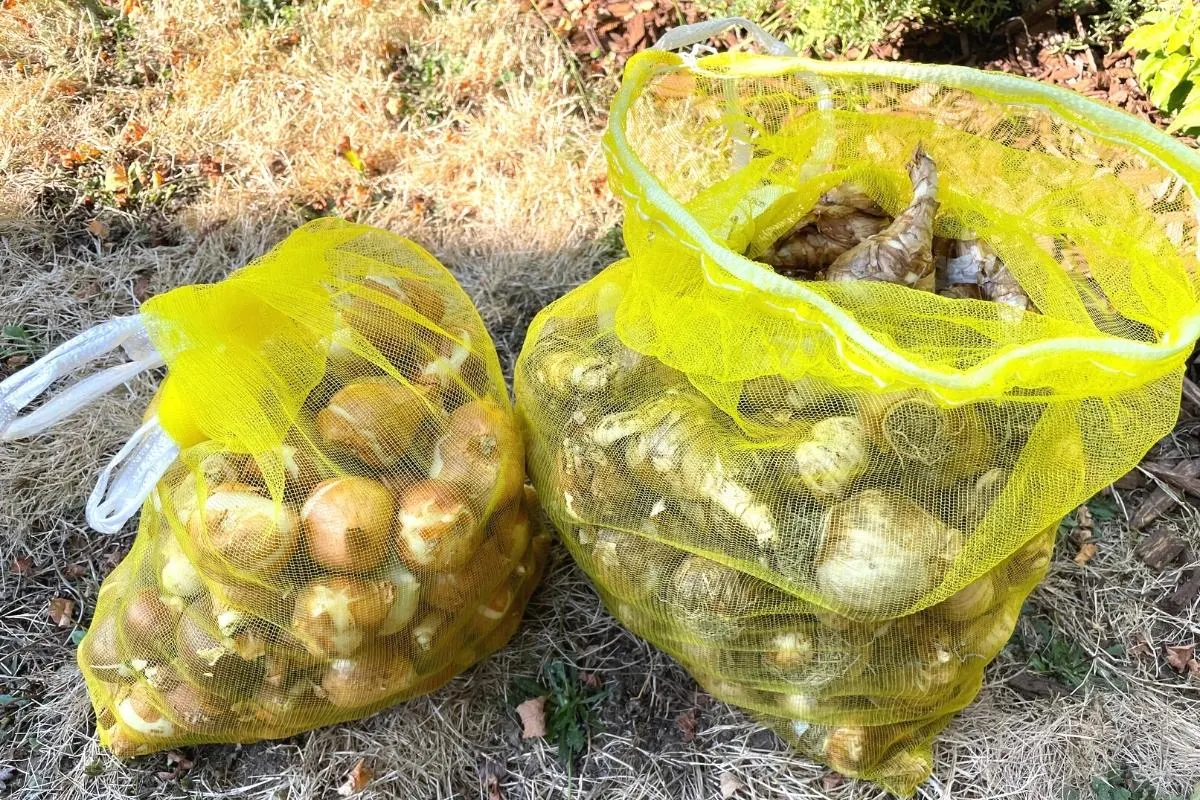
To store the bulbs, place them in a mesh bag or a paper bag with small holes to allow for air circulation. This will help prevent the buildup of moisture, which could lead to rot or fungal issues.
Choose a cool, dry, and dark place to store the bag, ideally with a consistent temperature of around 50-60°F. Maintaining a stable temperature and humidity level is essential for preserving the bulbs' health during storage.
Taking proper care of your daffodils after they bloom is essential for maintaining their health and ensuring a stunning display in the years to come. By following these simple steps, you'll be well on your way to cultivating a vibrant and thriving daffodil garden.

